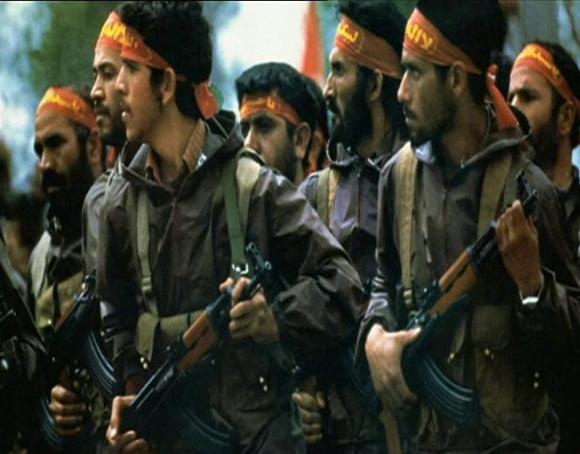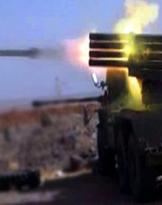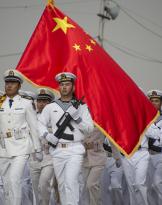There has been no good blood between Shiites and Sunnis since the 10th century, practically from the origins of Islam, when the legitimacy of spiritual guidance for Muslims became a central theme. However, the clash has never affected large numbers. The Shiites represent just over XNUMX% of Allah's faithful and the conflict, even if never overcome, has never degenerated. In the last century in particular, a prisoner of the claims and of the ethnic-schismatic fractures that characterize the many streams of Islam, he has never left the confessional sphere.
In our time, the division between "Orthodox" and Islamic "rebels" only regained political weight with the return of Ayatollah Khomeini to Iran in 1979. But even when Shiite Iran began to frighten the Sunni monarchies in the Gulf, the clash it has generated friction capable of influencing geopolitics in the Middle East, but never to the point of triggering large-scale wars.
Let's take an example.
For the duration of the Iran-Iraq war Khomeini was referring to Saddam Hussein with the title of "unfaithful snake", infuriated not only by the aggression of the 1980 but also by the fierce repression of the rais of Baghdad of the Shiite majority in Iraq. The Gulf monarchies, for their part, supported Iraq throughout the 80s precisely to curb Tehran. The obsession was especially strong in Saudi Arabia and Bahrain where Shiite minorities are loudest. The Saudi city of Qatif is the heart of the Shi'ism of the Peninsula and is a stone's throw from the Bahrain archipelago, repeatedly agitated by religious revolts.
However, support for Saddam was anything but theological. The rais, although a Sunni, in addition to being a layman, he was also a formator Ba'athist Nasserian, with an anti-theocratic socialist vein. Not even to say Saddam two years later the armistice with Iran disavowed the "Blessed well" Sunni attacking Kuwait, the first link in the anti-Iranian and anti-Shiite Arab supply chain.
In other words, there have been no major wars between Sunnis and followers of Ali in contemporary history, and even violent clashes have always been confined to local feuds.
Things change. Let's see why.
The concrete source of fundamentalist danger up until twenty years ago was more than anything else Shi'ism which makes an axiom of the union between the sacred and the profane and of theology and politics. The followers of Alì are the proponents of an all-encompassing interpretation of Islam that aspires to a total fusion between Earth and Heaven: the theocracy precisely, from the 1979 enacted precisely by Iran. 
But the Sunnis have ousted the Shiite fundamentalist potential since the conservative vision Wahhabi it has spread like wildfire between Asia and Africa.
Behind this growth is Saudi Arabia, the cradle of the most conservative interpretation of the Koran, which later became the theological and ideological guide for the Taliban, Al Qaeda and the Islamic State.
La Jihad Over time the Sunni doubled the Shiite one, allowing even Iran to play the part of the moderate (war on ISIS in Syria).
To put it briefly, today in the Middle East there are two theocratic states, Saudi Arabia and Iran, deployed on the two opposite shores of the Islam river.
Saudi Arabia, the custodian of two major Islamic holy places (Mecca where Mohammed was born, Medina where he is buried), makes Wahhabism the basis for exporting its political weight. It is self-evident that international terrorism of a Sunni matrix enjoys enormous political and financial coverage.
In this column we have spoken several times of the geopolitical growth of Riyadh, which is increasingly able to influence American strategic choices and increasingly autonomous as a regional and even global power.
What should we expect then?
Two recent events have enormous importance in the development of the next Middle Eastern and not only geopolitical calibrations:
- the execution of the January 2 in Saudi Arabia of the Shiite imam Al-Nimr;
- the decision of the Arab League and the Gulf Cooperation Council to declare Hezbollah a terrorist organization.
The first is a great political signal: Riyadh can afford to challenge Iran not only on a regional scale. The two countries are respectively the first and fourth producers of crude oil in the world, with a different vision also regarding the price per barrel. The long-distance clash between Sunnis and Shiites in Syria, Yemen and Iraq is therefore proof of a geopolitical challenge between powers that goes beyond religion.
Witness the Arab League and the Gulf Cooperation Council (the six countries of the Persian Gulf) which on March 12 and 2 respectively, under pressure from Saudi Arabia, banned Hezbollah. The vote of the League speaks volumes about who is giving the cards among the Arabs and about the new climate in the Middle East: only Iraq and Lebanon, countries with strong Shiite presences and involved in the war in Syria, have expressed themselves against the condemnation . Syria, suspended from work, did not vote.
The Lebanese "Party of God" has been a myth of Muslims all over the world for decades for striking and holding its own against Israel. Now the Saudis (and the Arabs who follow them) speak of it in the same language as a Western chancellery, fueling Iranian and Syrian suspicions of a "Zionist conspiracy".
The enigmatic relationship of Arabia and Israel with the Islamic State, the two common enemies Iran and Hezbollah, the privileged relationship with the USA, the historic friendship with Turkey ... There are many who claim that the Jewish State and Saudi Arabia have many more convergences than the label makes believe.
Iran would therefore be the true antagonist of the western dollar-centric plutocracy and Saudi Arabia on the other hand the two-headed kingdom that on the one hand favors it and on the other the threat with Islamic fundamentalism.
Is there this behind the Sunni-Shiite clash?
The next US president will tell us a lot about the evolution of the strategic relationship between Iran and Russia.
Whatever the background, the choice of Riyadh nonetheless involves an internal rift in the Islamic world but also in the Arab world. With the re-launch of the challenge to the Shiites, the polarization of a Middle East, whose equilibrium is in an evident phase of rotation, increases.
(Photo: ISNA)
Read also:
Islam against Islam. Iran becomes necessary












